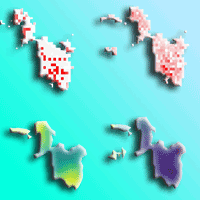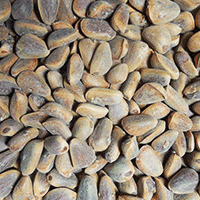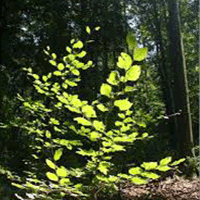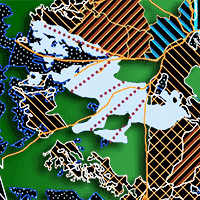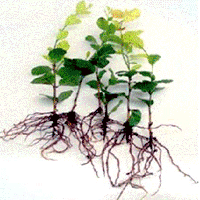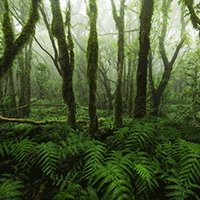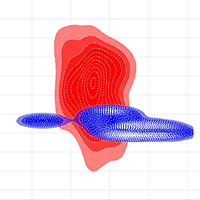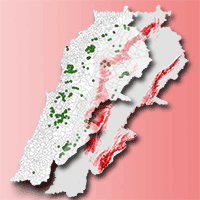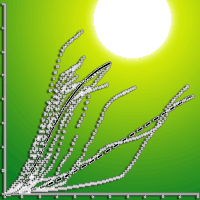
Methods for predicting Sitka spruce natural regeneration presence and density in the UK
Simone Bianchi (1) , Sophie Hale (2), James Gibbons (1)
iForest - Biogeosciences and Forestry, Volume 12, Issue 3, Pages 279-288 (2019)
doi: https://doi.org/10.3832/ifor2888-012
Published: May 23, 2019 - Copyright © 2019 SISEF
Research Articles
Abstract
Natural regeneration is crucial for silvicultural approaches based on the continuous presence of a forest cover, or Continuous Cover Forestry (CCF). Sitka spruce (Picea sitchensis) is the main commercial species in the United Kingdom (UK), and its potential for CCF has been demonstrated in various studies. However, there are no quantitative models available to predict its natural regeneration in the country. We describe models for Sitka spruce seedlings presence and density under canopy cover in the UK forests, to be used as a substitution of a regeneration survey. Using a natural regeneration dataset comprised of 340 plots, a Generalized Linear Mixed Model (GLMM) was calibrated to estimate the likelihood of regeneration presence at plot level. Seedling density was simulated in a subsequent step using only the subset of data with regeneration presence (138 plots): we compared methods based on GLMMs calibrated to the observed seedling density, and the simple generation of random numbers similar in distribution to the observed values. We validated the models with a cross-validation method using the calibration dataset and with an independent dataset of 78 plots collected in forests already in the process of transformation to CCF. The best GLMM for regeneration presence included age of the plantation, time after last thinning, favourable ground cover and basal area. After the cross-validation, 73% of the plots were correctly estimated (76% for presence of regeneration and 71% for the absence). After the independent validation process, 82% of the plots were correctly estimated, although 100% for presence of regeneration and only 12% for the absence. Both methods for estimating seedling density had a poor performance, both with the cross-validation and independent validation. The results showed that the tools here described are appropriate for estimating regeneration presence in traditional Sitka spruce plantations. However, alternative methods are required for forests already in an advanced stage of transformation to CCF systems.
Keywords
Sitka Spruce, Natural Regeneration, Regeneration Occurrence, Logistic Modelling, Seedling Density
Authors’ Info
Authors’ address
James Gibbons 0000-0002-0083-9872
School of Environment, Natural Resources and Geography, Bangor University, Bangor, Gwynedd (UK)
Northern Research Station, Forest Research, Roslin, Midlothian (UK)
Corresponding author
Paper Info
Citation
Bianchi S, Hale S, Gibbons J (2019). Methods for predicting Sitka spruce natural regeneration presence and density in the UK. iForest 12: 279-288. - doi: 10.3832/ifor2888-012
Academic Editor
Gianfranco Minotta
Paper history
Received: Jun 07, 2018
Accepted: Mar 18, 2019
First online: May 23, 2019
Publication Date: Jun 30, 2019
Publication Time: 2.20 months
Copyright Information
© SISEF - The Italian Society of Silviculture and Forest Ecology 2019
Open Access
This article is distributed under the terms of the Creative Commons Attribution-Non Commercial 4.0 International (https://creativecommons.org/licenses/by-nc/4.0/), which permits unrestricted use, distribution, and reproduction in any medium, provided you give appropriate credit to the original author(s) and the source, provide a link to the Creative Commons license, and indicate if changes were made.
Web Metrics
Breakdown by View Type
Article Usage
Total Article Views: 45906
(from publication date up to now)
Breakdown by View Type
HTML Page Views: 38022
Abstract Page Views: 3857
PDF Downloads: 3228
Citation/Reference Downloads: 4
XML Downloads: 795
Web Metrics
Days since publication: 2396
Overall contacts: 45906
Avg. contacts per week: 134.12
Citation Metrics
Article Citations
Article citations are based on data periodically collected from the Clarivate Web of Science web site
(last update: Mar 2025)
(No citations were found up to date. Please come back later)
Publication Metrics
by Dimensions ©
Articles citing this article
List of the papers citing this article based on CrossRef Cited-by.
References
Characterising performance of environmental models. Environmental Modelling and Software 40: 1-20.
CrossRef | Gscholar
Using natural disturbance regimes to guide the management of northwestern coastal forests. In: “Ecological Forest Management Handbook” (Larocque GR Ed). CRC Press, Boca Raton, Florida, USA, pp. 17-21.
Gscholar
Yield models for forest management. Forestry Commission Booklet 48, Forestry Commission, Farnham, UK, pp. 32.
Gscholar
Predicting regeneration establishment with the Prognosis Model. Research paper INT-476, Intermountain Research Station, USDA Forest Service, Ogden, Utah, USA, pp. 48.
Gscholar
Natural regeneration of interior Douglas-fir in the northern Rocky Mountains. In: Proceedings of the Symposium “Interior Douglas-fir the species and its management” (Baumgartner DM, Lotan JE eds). Spokane (Washington, USA) 27 Feb - 1 Mar 1990. Washington State University Press, Pullman, Washington, USA, pp. 239-246.
Online | Gscholar
Compare and contrast natural regeneration of Sitka spruce (Picea sitchensis (Bong.) Carr) managed under different silviculture systems and assess balance between overstorey and understorey carbon. MSc thesis, Bangor University, Bangor, UK, pp. 111.
Gscholar
Morphological and physiological responses of Sitka spruce seedlings to varying light regimes. BSc thesis, University of Edinburgh, Edinburgh, UK, pp. 41.
Gscholar
Transforming even-aged conifer stands to continuous cover management. Information Note 40, Forestry Commission, Edinburgh, UK, pp. 8.
Gscholar
The potential for the natural regeneration of conifers in Britain. Bulletin no. 120, Forestry Commission, Farnham, UK, pp. 50.
Gscholar
An ecological site classification for forestry in Great Britain. Bulletin no. 124, Forestry Commission, Edinburgh, UK, pp. 100.
Gscholar
Historical emergence and current application of CCF. In: “Continuous Cover Forestry” (Pukkala T, Von Gadow K eds). Springer Science and Business Media, Netherlands, pp. 1-28.
Gscholar
Undercanopy microclimatology of Sitka spruce plantation forests: implications for natural regeneration. PhD thesis, University of Liverpool, Liverpool, UK, pp. 217.
Gscholar

